What is a heart attack?
Every year, about 25,000 Swedes suffer a heart attack and around 5,000 die. Typical symptoms include chest pain, shortness of breath and dizziness. Treatment often involves angioplasty (PCI) or clot-dissolving medication. After a heart attack, the risk of falls increases due to weakness and blood pressure drops, making preventive measures such as exercise and safety alarms crucial.
Definition and overview
A heart attack occurs when blood flow to the heart muscle is blocked, most often by a blood clot forming in the coronary arteries. These vessels supply the heart muscle with oxygen and nutrients, and when the flow is cut off, parts of the heart muscle become damaged or die.
A heart attack is an acute and life-threatening condition. Without prompt treatment it can be fatal. Although treatments and survival rates have improved in recent decades, heart attacks remain one of the most common causes of hospital admissions and deaths in Sweden.
Prevalence and statistics
Every year, about 25,000 people in Sweden suffer a heart attack [1]. The majority are over 65, but younger people can also be affected. Men have a slightly higher risk than women, although the gap narrows with age.
Heart attacks are also one of the most common causes of death in Sweden. Approximately 5,000 people die annually in connection with a heart attack, though mortality has decreased thanks to better medication, faster interventions and improved cardiac rehabilitation.
Globally, heart attacks are a major health concern. The World Health Organization (WHO) estimates that ischemic heart disease, including heart attacks, is the leading cause of death worldwide [2].
Common symptoms
Symptoms of a heart attack can vary, but the most common include:
-
Pressure or pain in the chest, often persistent
-
Pain radiating to the arm, back, neck, jaw or stomach
-
Sudden shortness of breath
-
Cold sweats
-
Nausea and dizziness
In women and older adults, symptoms can be more diffuse – such as fatigue, shortness of breath or pain in the upper abdomen – which sometimes leads to delayed diagnosis.
Risk factors
The major risk factors for heart attacks include:
-
High blood pressure
-
High cholesterol
-
Smoking
-
Diabetes
-
Overweight and physical inactivity
-
Older age
-
Family history of heart disease
Many of these factors can be influenced through lifestyle changes, but some, like genetics, cannot be modified.
Treatment
If a heart attack is suspected, it is critical to call emergency services immediately. Ambulance staff can begin treatment at the scene, for example by giving blood-thinning medication.
Hospital treatments often include:
-
Angioplasty (PCI): a catheter with a small balloon is inserted into the blocked artery to open it; a stent is sometimes placed.
-
Clot-dissolving drugs: used when PCI is not available.
-
Bypass surgery: creating an alternative pathway for blood to flow around the blockage.
After a heart attack, patients are usually prescribed a combination of medications such as blood thinners, blood pressure drugs and cholesterol-lowering drugs. Rehabilitation also includes lifestyle changes and cardiac training.
How a heart attack increases fall risk
A heart attack does not only affect the heart – it also impacts balance and significantly increases the likelihood of falls.
Several factors contribute:
-
Weakness and fatigue: Many patients feel exhausted, which reduces muscle strength and stability.
-
Dizziness and low blood pressure: Blood pressure medication prescribed after a heart attack may cause dizziness or fainting.
-
Reduced fitness: Lower physical activity during recovery can further weaken muscles.
-
Psychological factors: Fear of having another heart attack can lead to less movement, which paradoxically increases fall risk.
Studies show that patients recovering from a heart attack have a markedly higher risk of falls compared to those without heart disease [3]. Falls can lead to serious injuries – such as hip fractures or head trauma – prolonging hospitalization and complicating recovery.
To reduce risk, fall-preventive measures are essential, including balance and strength training, home adjustments, and personal safety alarms that enable rapid help if an accident occurs.
Safety alarm with automatic fall alarm can increase safety for people with an increased risk of falling
Sensorem’s personal alarm is an example of a technical aid specially developed for people who have an increased risk of falling. The personal alarm can automatically trigger the alarm in the event of a fall and then call relatives using the watch’s built-in speakerphone with two-way communication. The personal alarm works outdoors and has built-in GPS positioning so that relatives can see the user’s position on a map in the Sensorem app.
READ ABOUT HOW SENSOREM’S PERSONAL ALARM AUTOMATICALLY CAN DETECT A FALL
Sources:
- National Board of Health and Welfare (Sweden) – Heart attack statistics (2023).
- WHO – Cardiovascular diseases fact sheet (2023).
- Swedish Heart-Lung Foundation – Facts about heart attack and rehabilitation.
- 1177 Vårdguiden – Heart attack.

